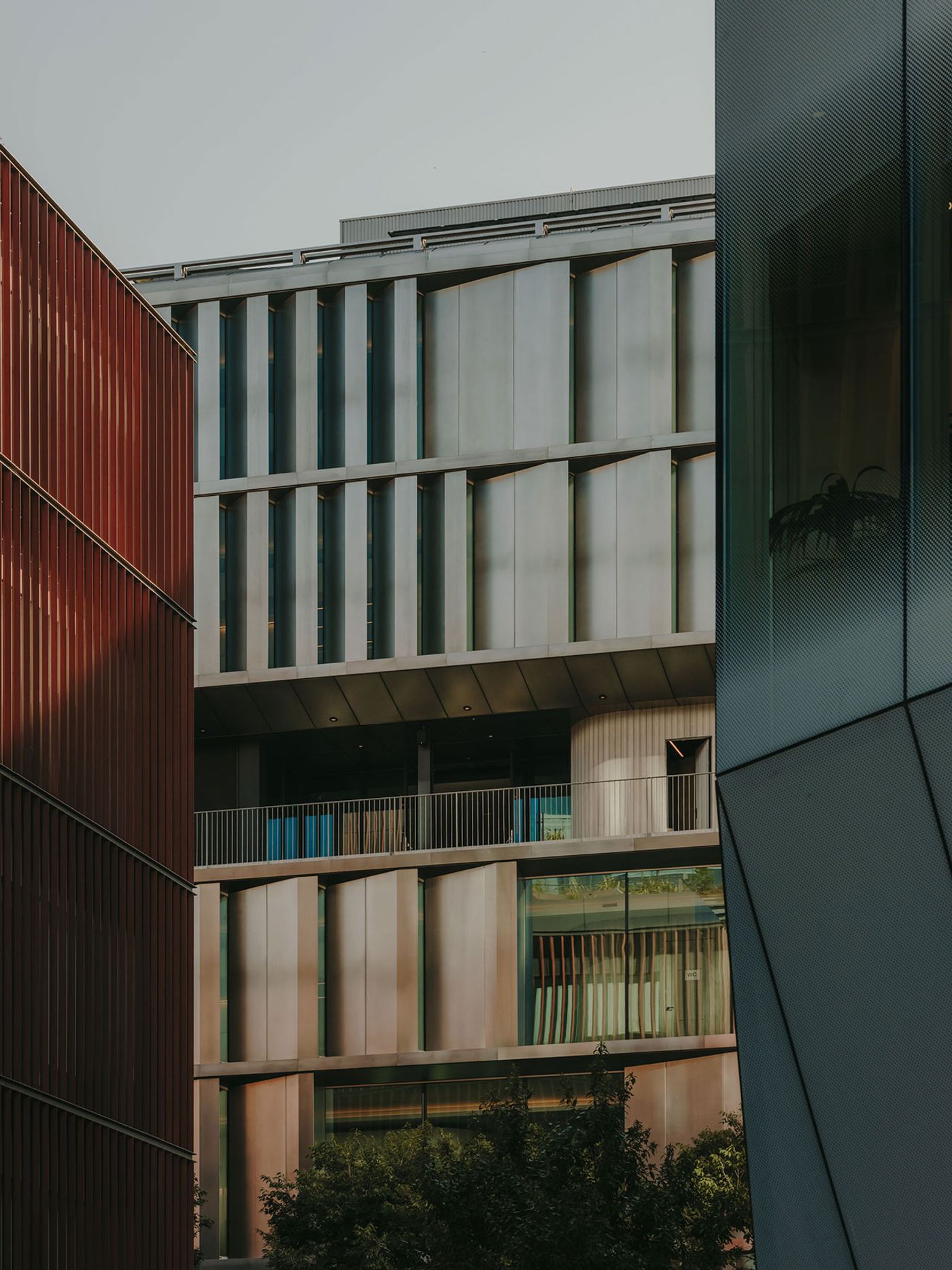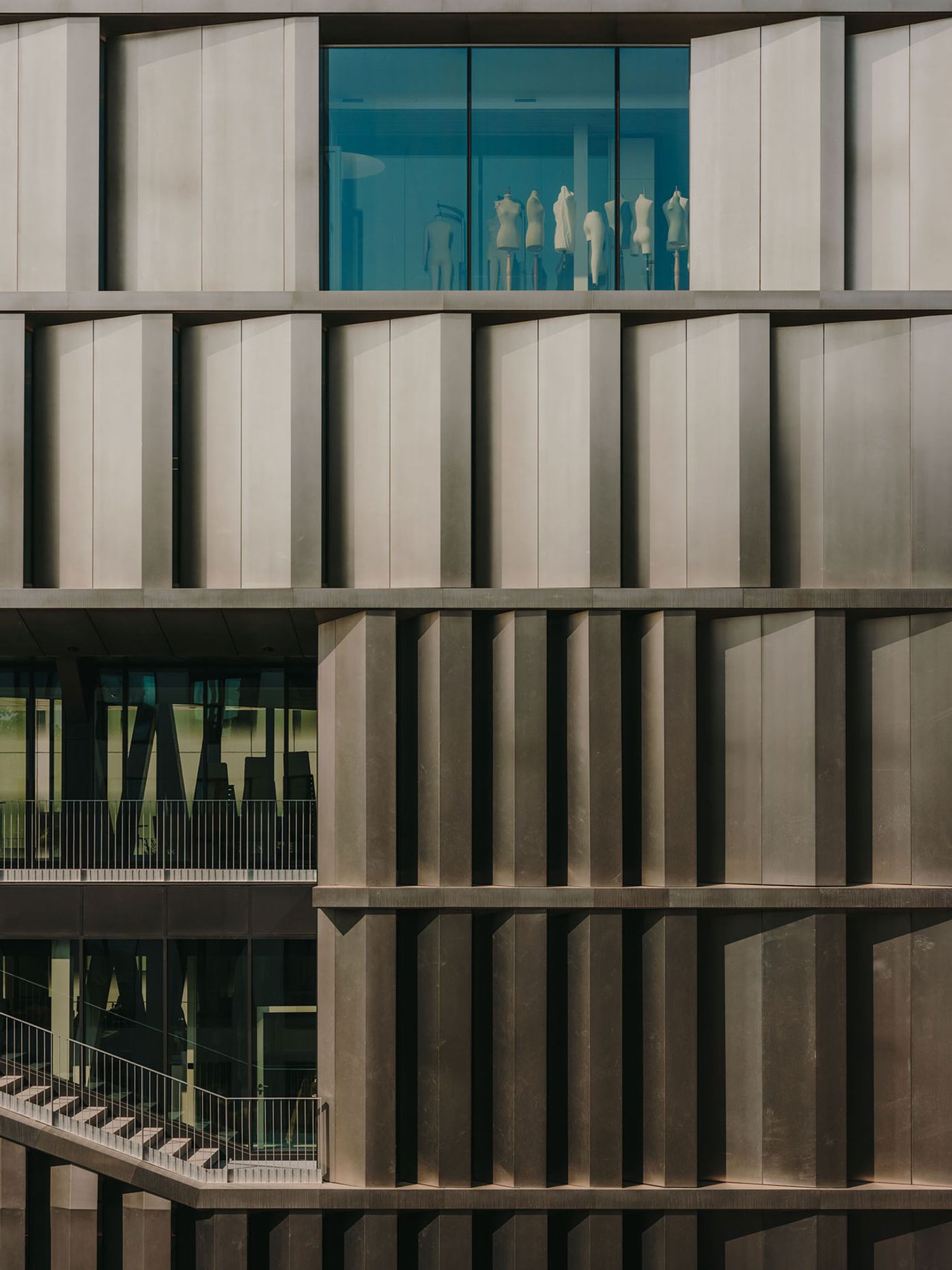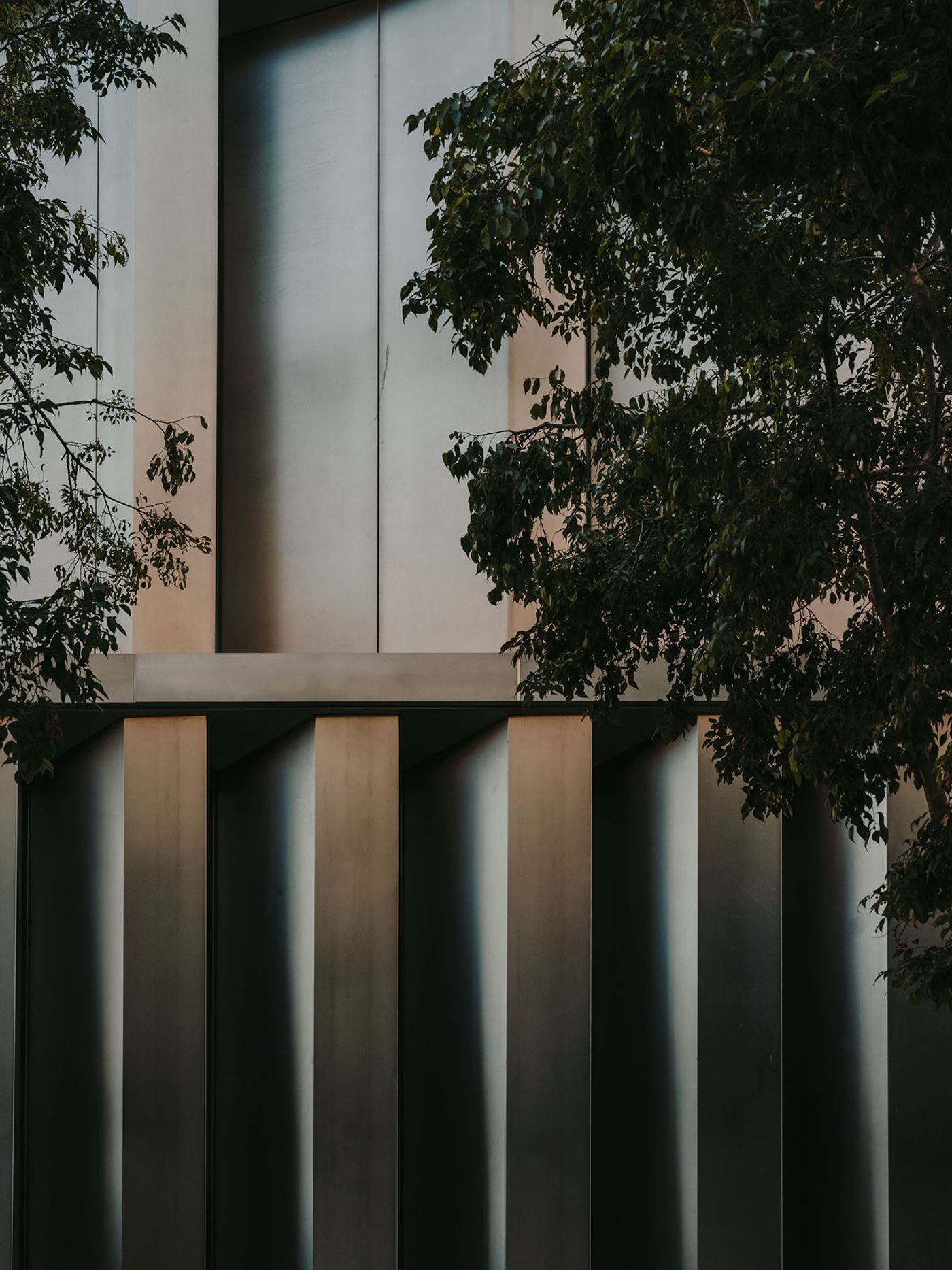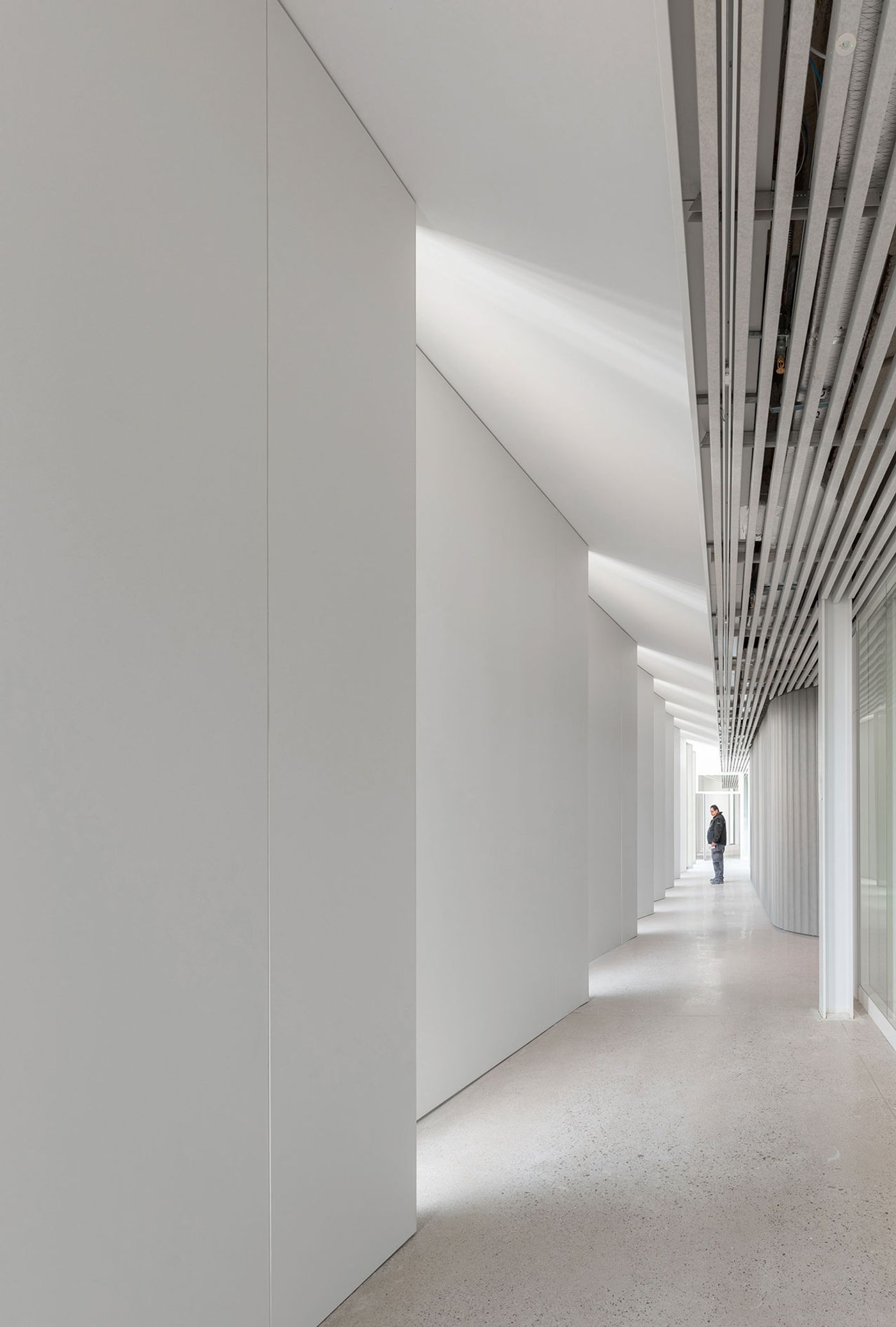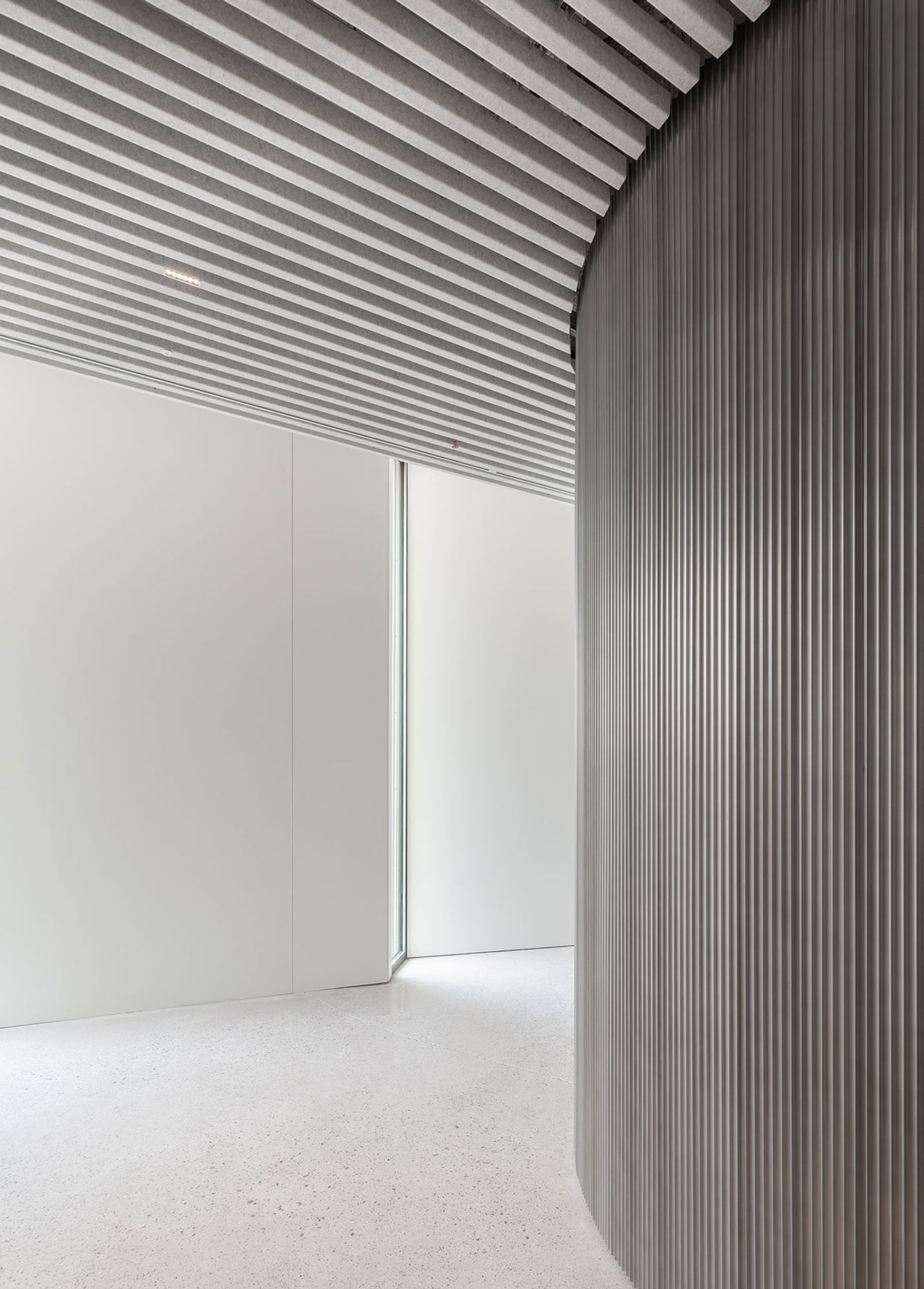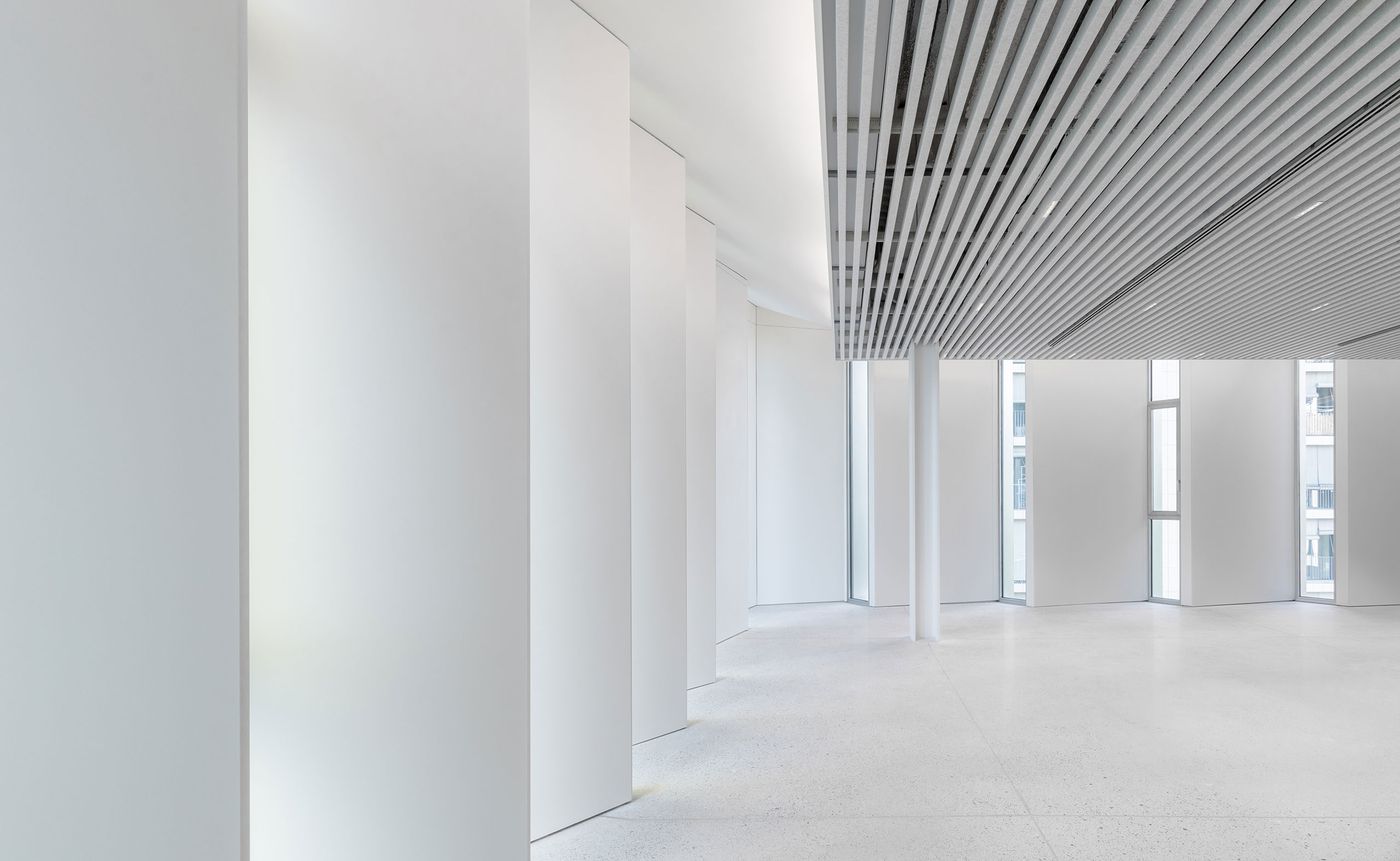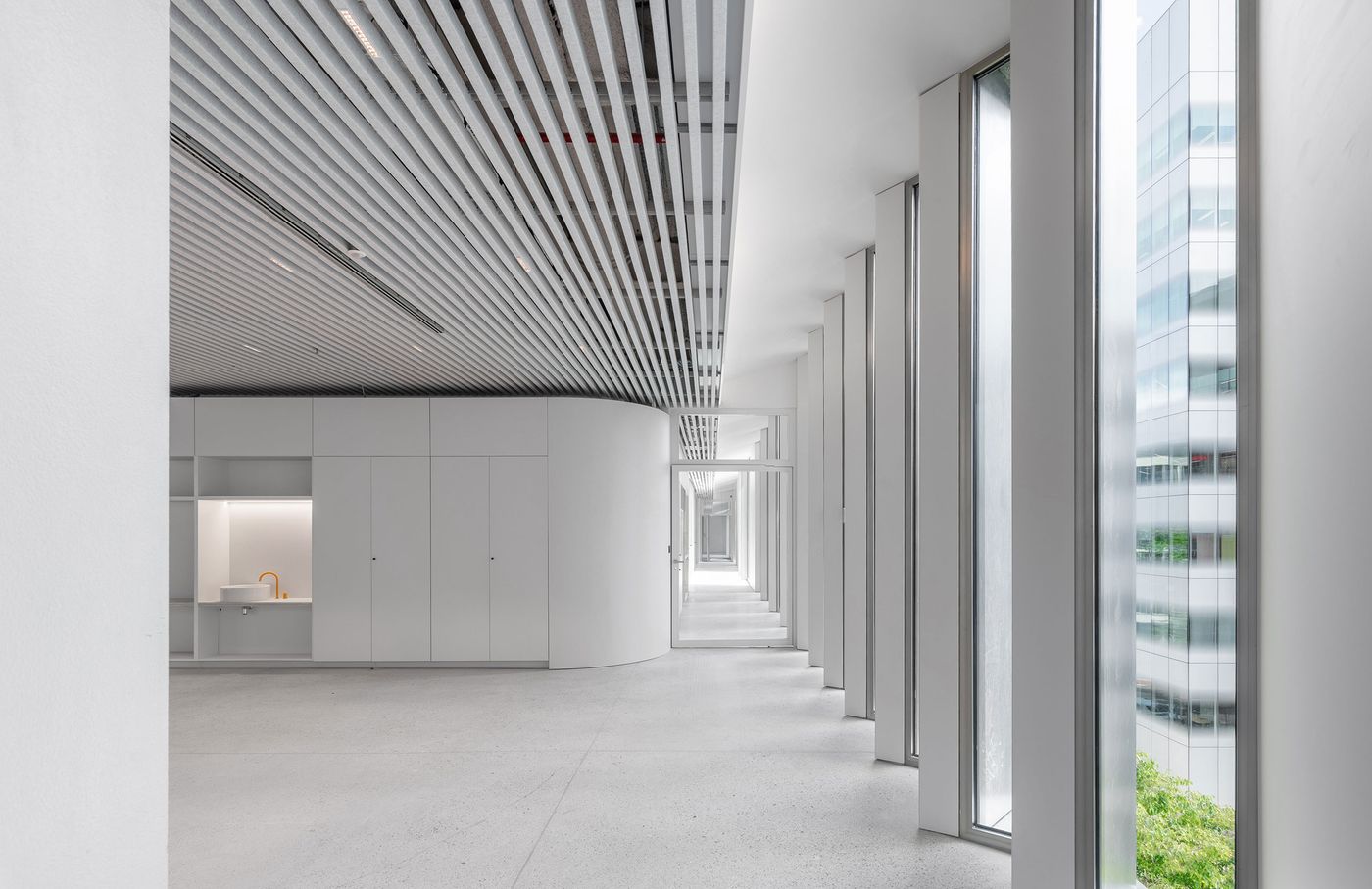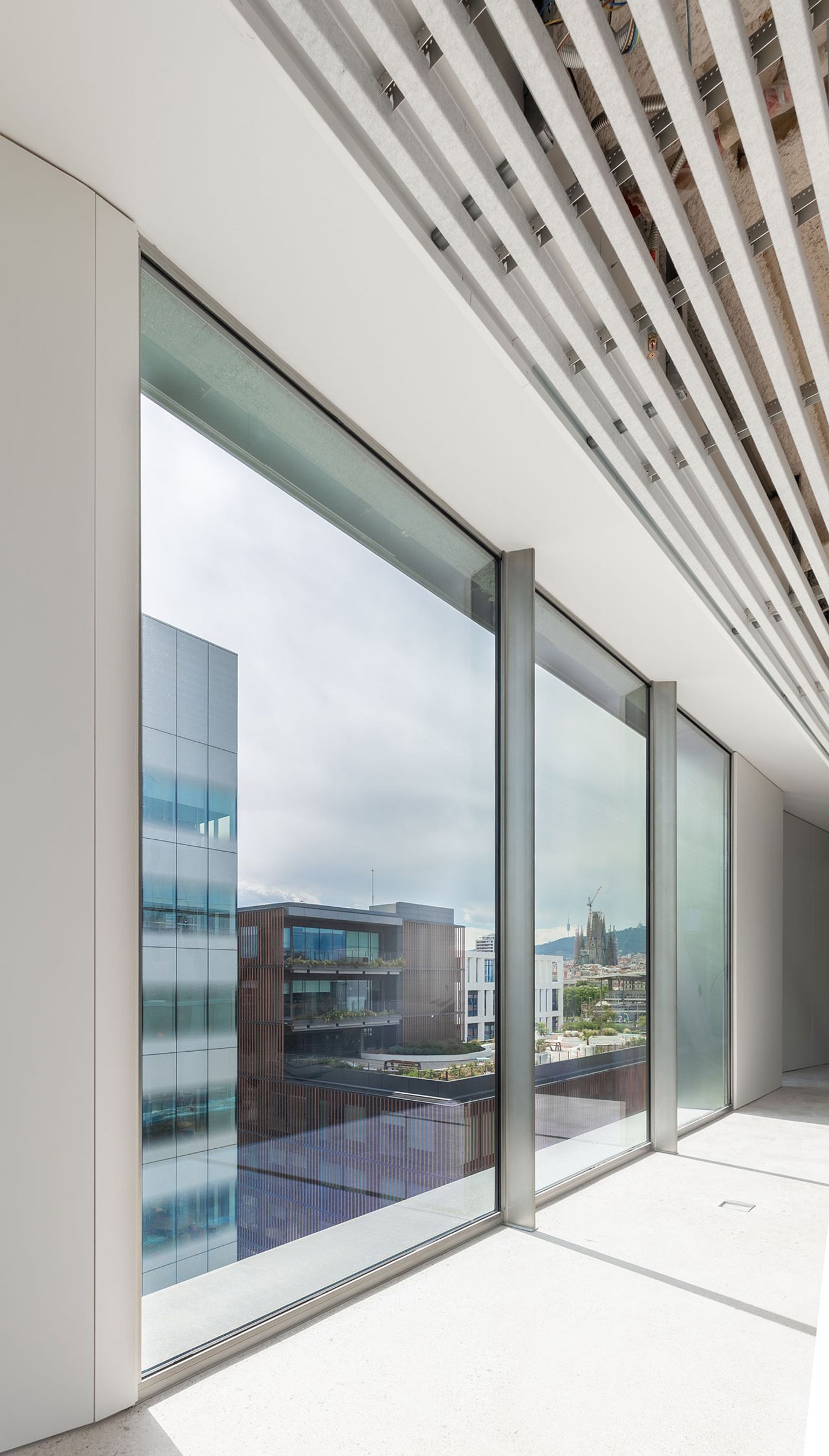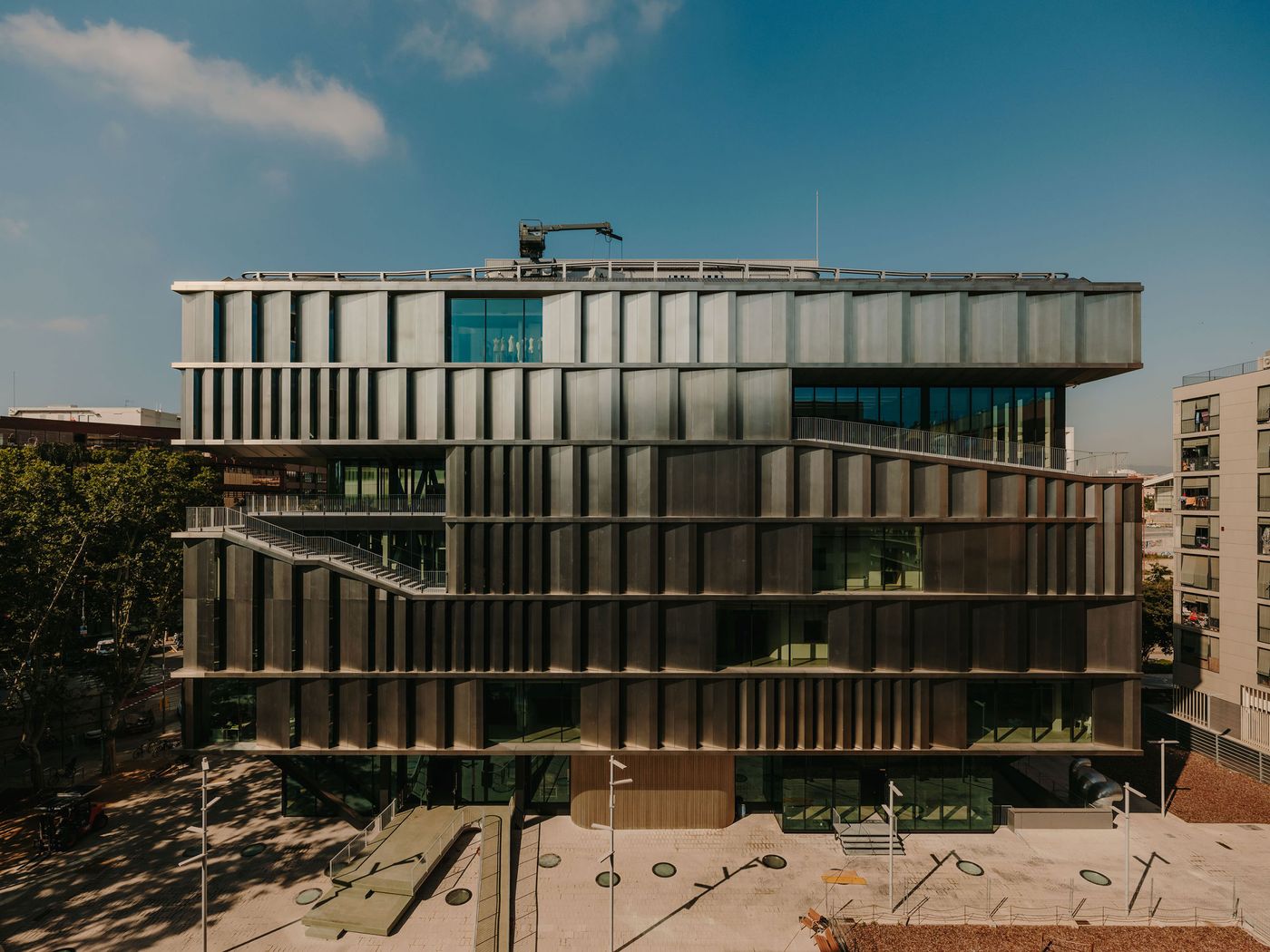
A Beacon of Modern Education: Circular Studio Designs LCI Barcelona's New Campus
Words by Yatzer
Location
Barcelona, Spain
A Beacon of Modern Education: Circular Studio Designs LCI Barcelona's New Campus
Words by Yatzer
Barcelona, Spain
Barcelona, Spain
Location
Catalan dressmaker Felicidad Duce Ripollés founded her fashion school and workshop in Barcelona in 1928, laying the groundwork for what would become a benchmark in higher fashion education in Spain. Her vision, combined with an innovative approach to teaching, keen sense of entrepreneurship, and remarkable communication skills, would go on to transform the institution into a leader in its field. Nearly a century later, a new campus in the city’s innovation district 22@ in the El Poblenou marks a significant step forward, merging the legacy of Felicidad Duce's pioneering fashion school with the innovative spirit of Canadian network LCI Education, which acquired the school in 2013. Designed by local architecture practice Circular Studio, LCI Barcelona's new premises successfully combines function and form to create an ideal environment fostering creativity, learning, and community engagement.
Catering to approximately 2,500 students, the seven-story metal and glass building was conceived as a "vertical campus," housing a dynamic blend of classrooms, labs, workshops, and social areas that support its expanded programs in art, design, communication, and technology. With Circular Studio’s design based on transparency, adaptability, and engagement with its surroundings, the end result is a fluid spatial experience that blurs the boundaries between indoor and outdoor spaces.

Photography by Salva Lopez.
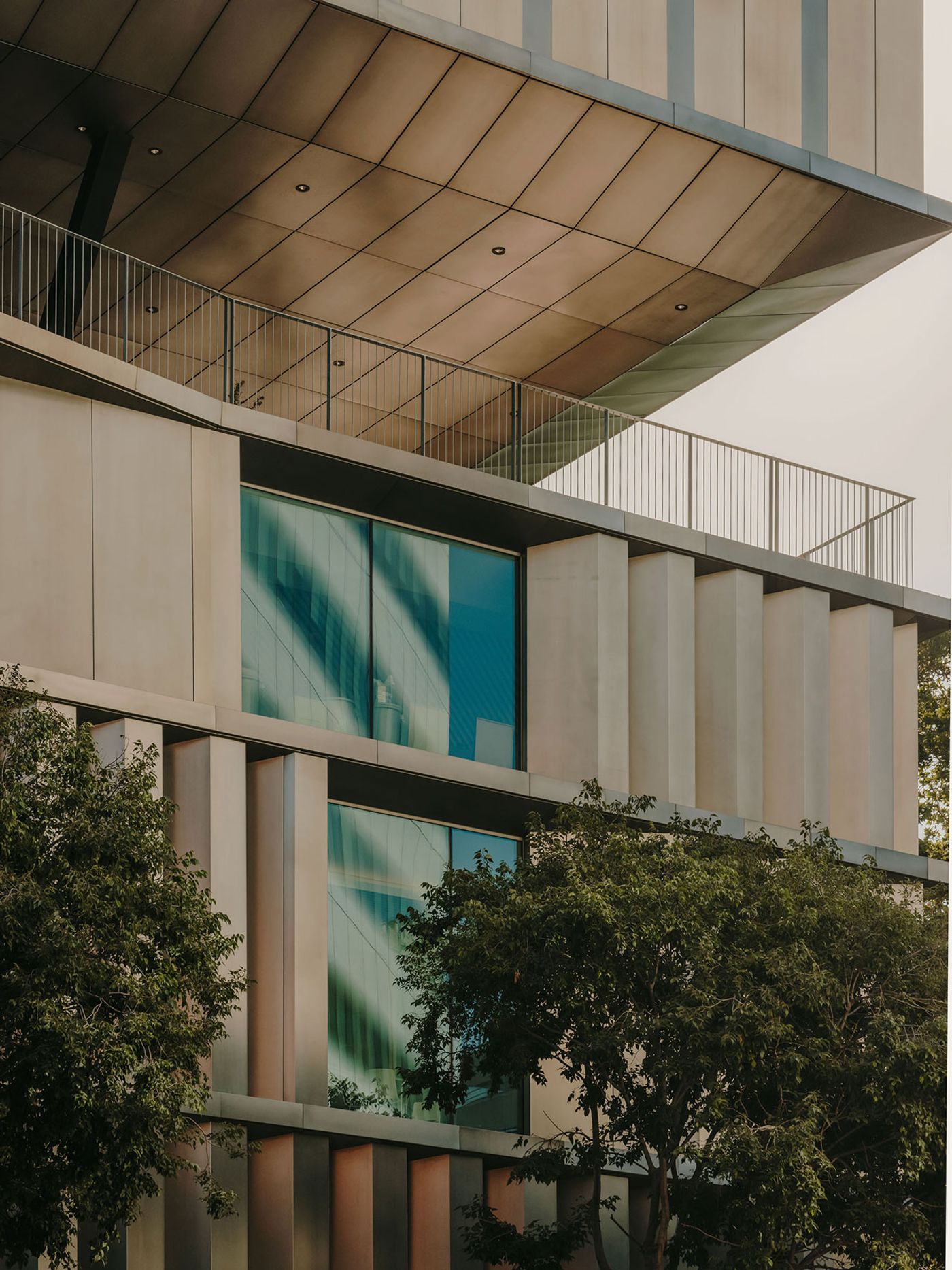
Photography by Salva Lopez.
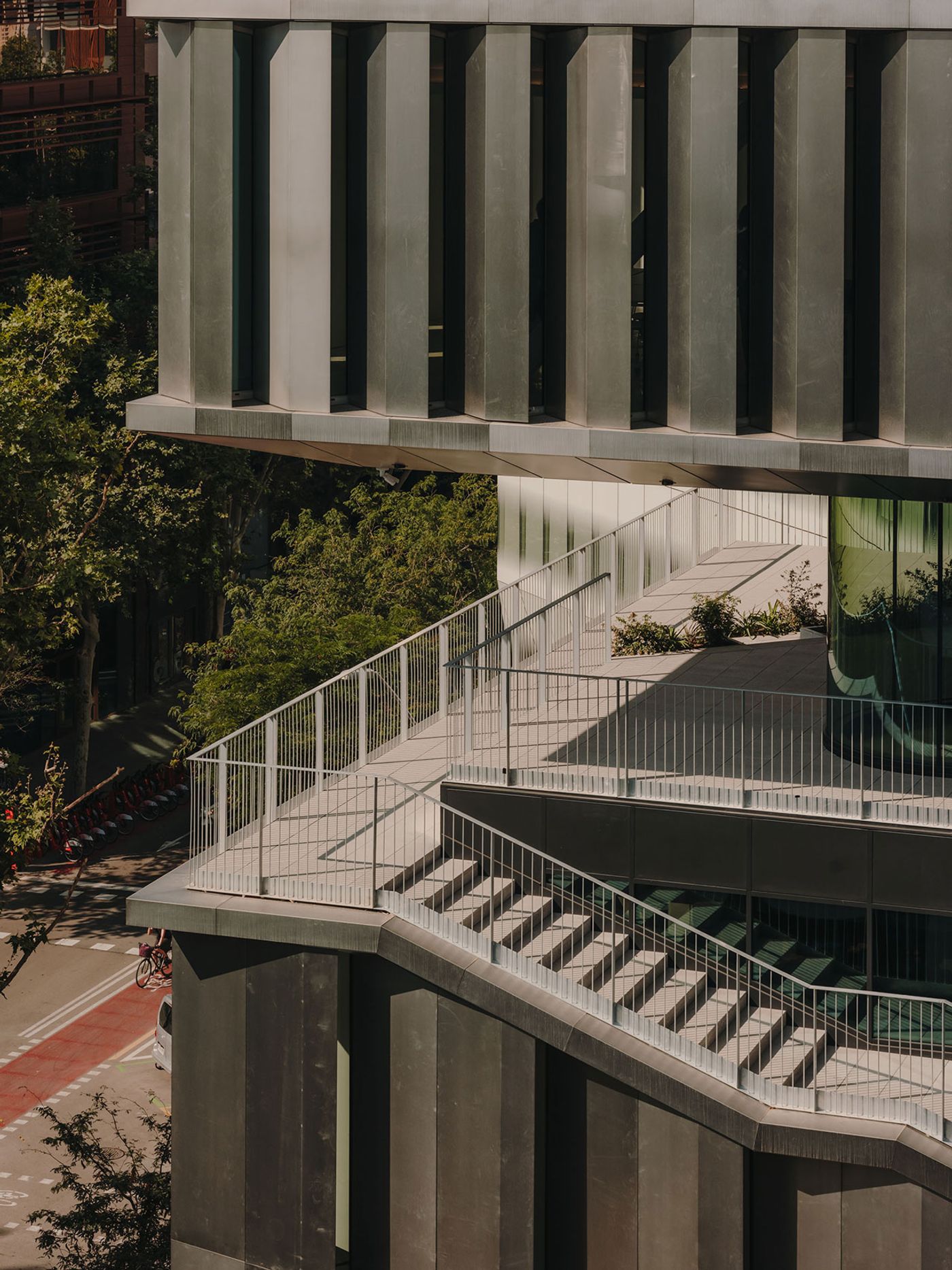
Photography by Salva Lopez.
Externally, the building is wrapped in a rhythmic arrangement of aluminium vertical panels, serving as both a shading device and an aesthetic statement. Set at an angle and interspersed with windows, these fin-like panels effectively block harsh sunlight while allowing soft, indirect light to filter into the interiors, creating a well-lit, comfortable environment for students and staff. Combined with the rhythmic design of the façades, the building takes on the appearance of a gleaming, high-tech structure. In contrast, the internal spaces are predominantly finished in white, amplifying the sense of openness and enhancing the quality of natural light within.

Photography by Salva Lopez.
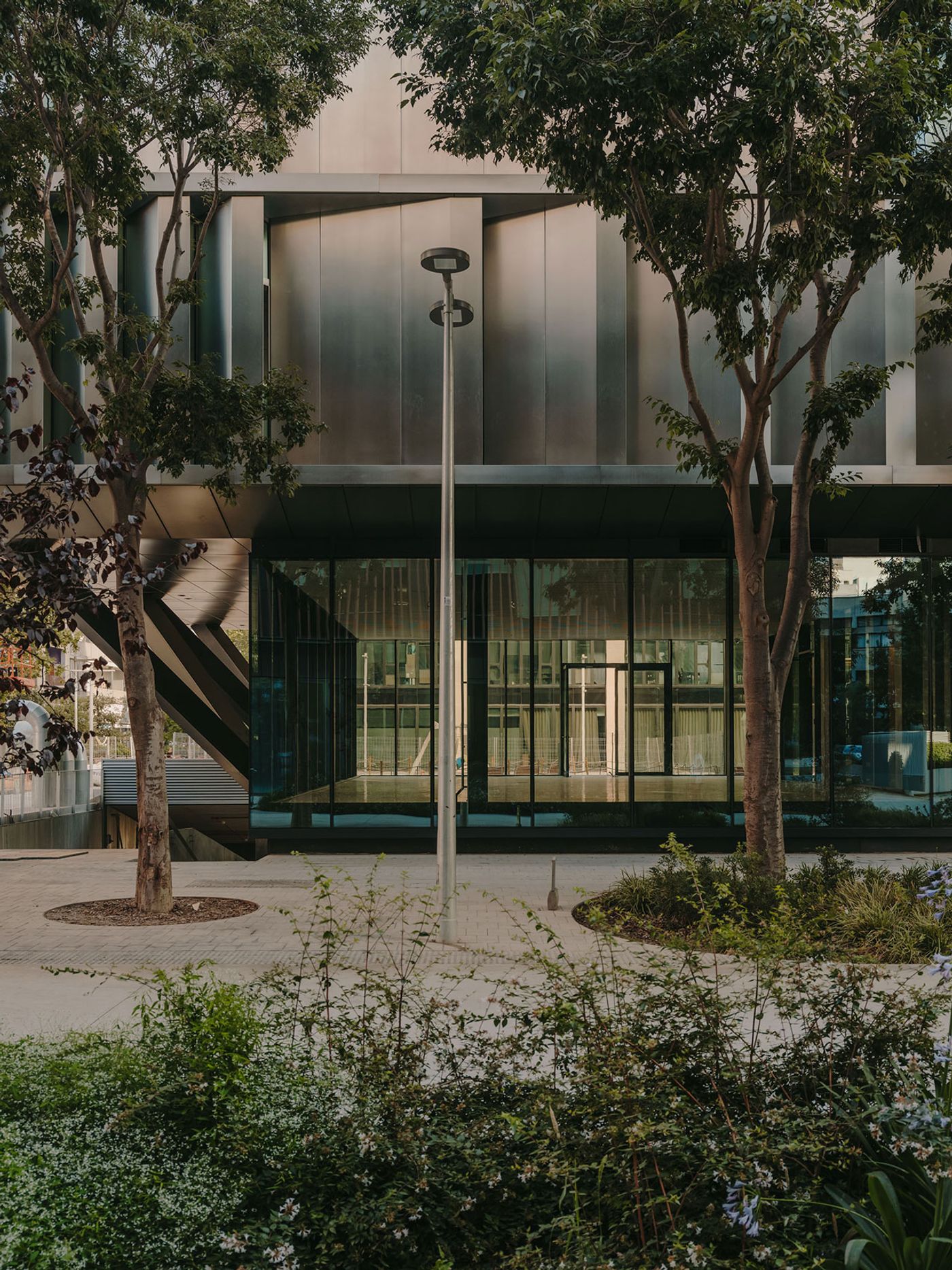
Photography by Salva Lopez.
The building features a ground floor that recedes from the building’s footprint to create a public plaza, accessible to both students and the local community. This plaza acts as a bridge between the city and the institution in what is a symbolic gesture that invites engagement and dialogue. Steps and ramps connect this open area with the interior, forming a cohesive pathway that extends into the building itself. Natural light floods into these communal spaces through large windows and skylights, creating a warm and welcoming environment conducive to learning and interaction, extending to the below-ground levels, designed as a hub for hands-on creativity, featuring FabLabs, photo labs, and flexible workspaces.
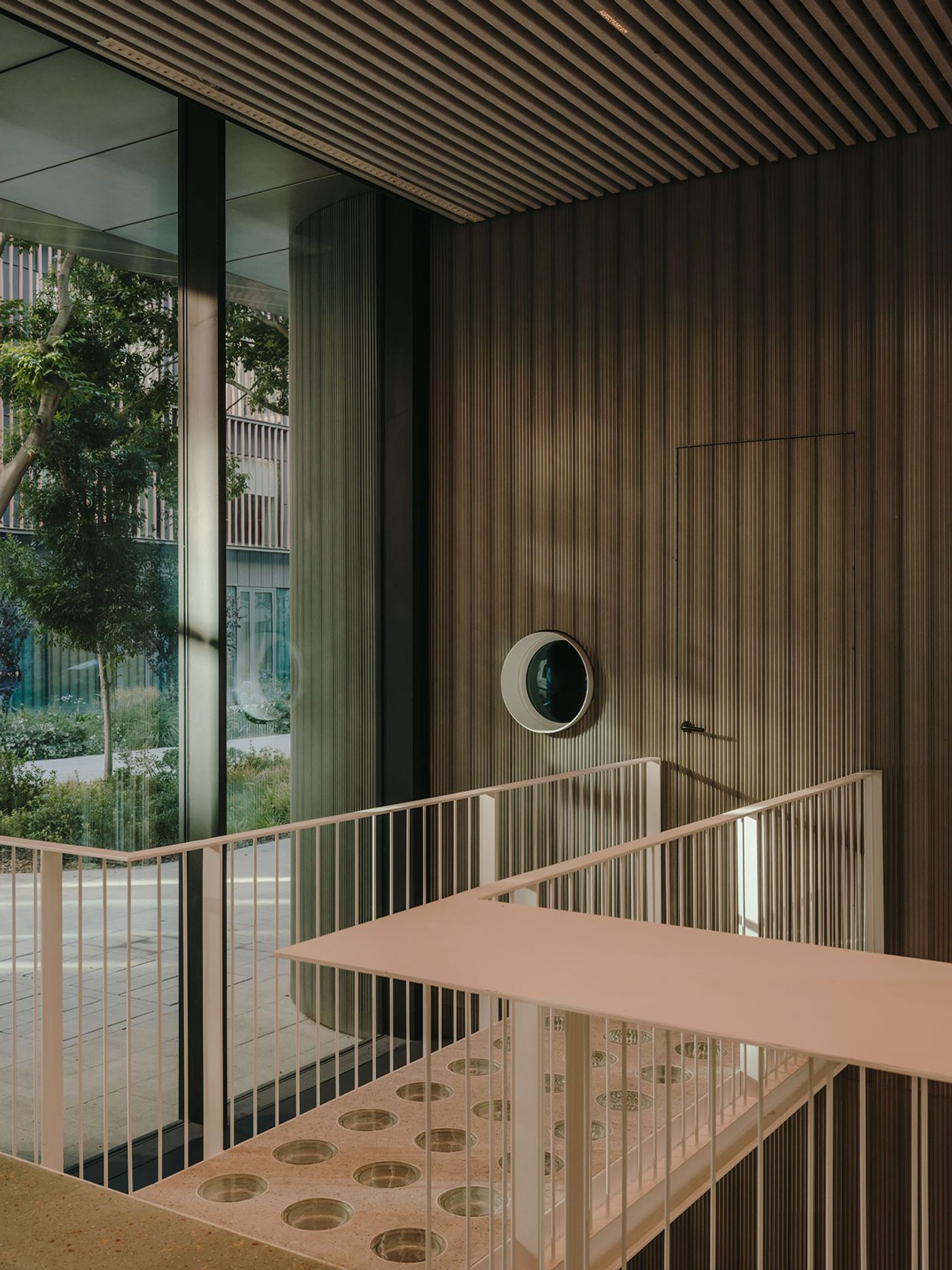
Photography by Salva Lopez.
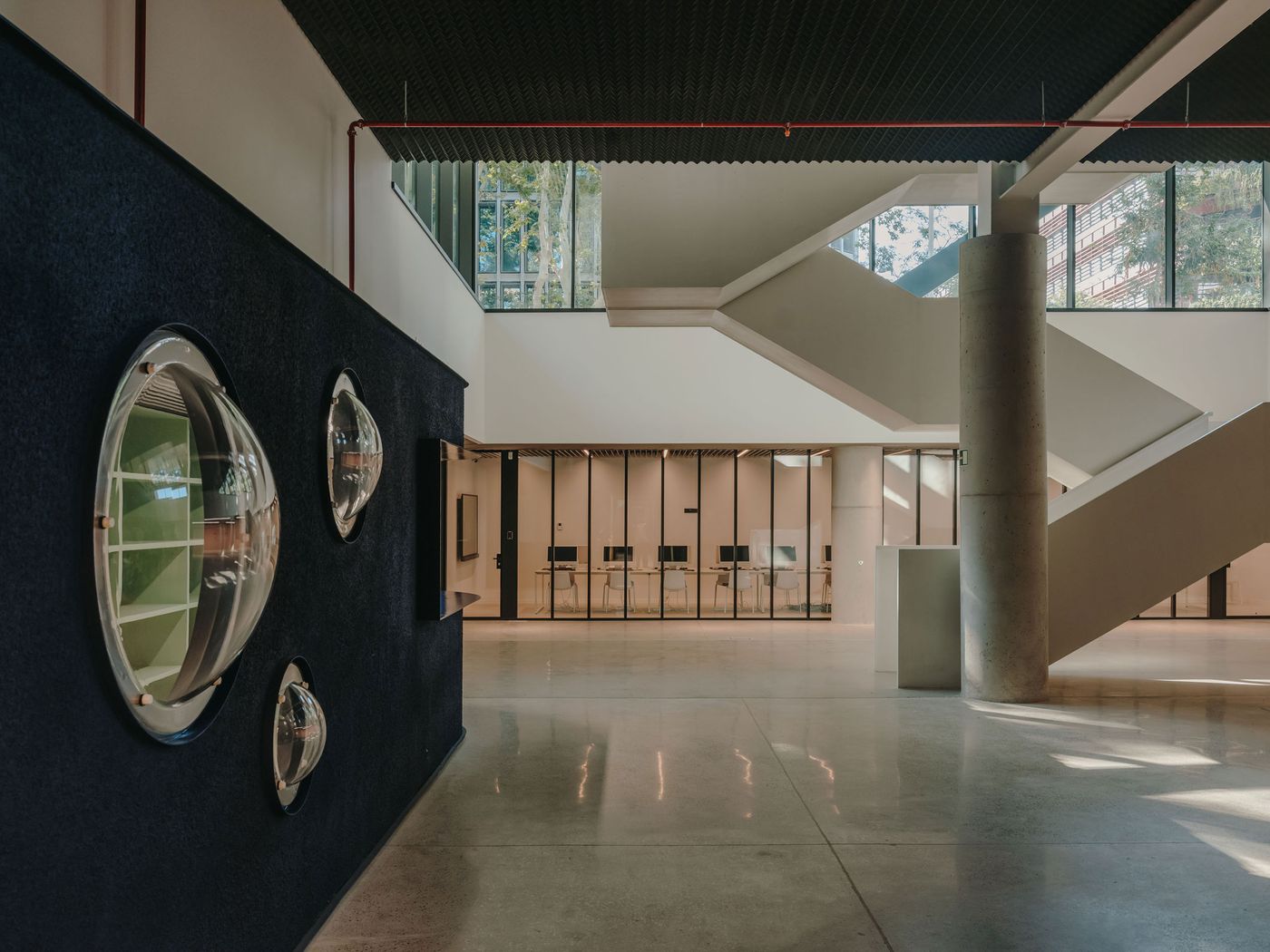
Photography by Salva Lopez.
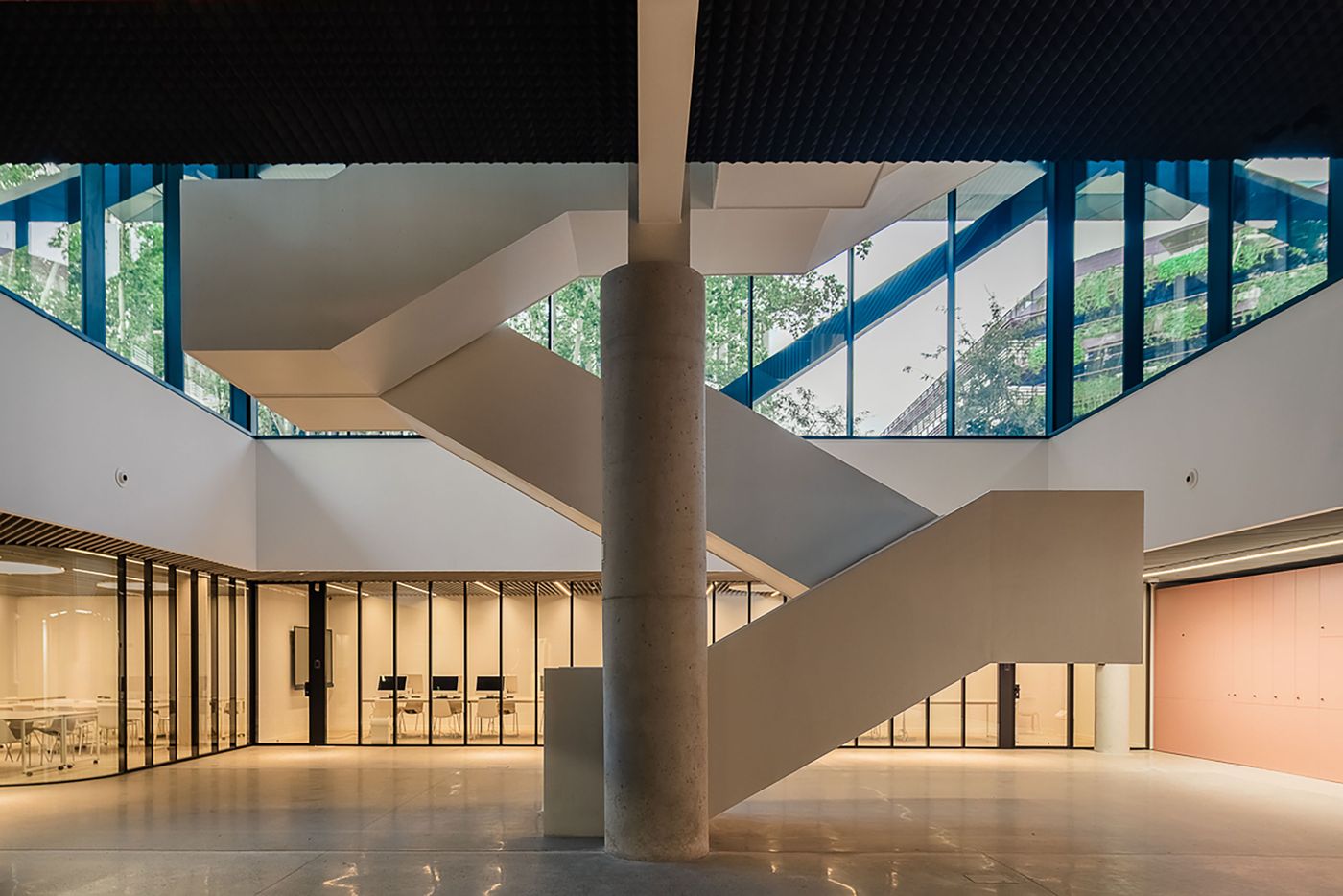
Photography by Julio Tavolo.
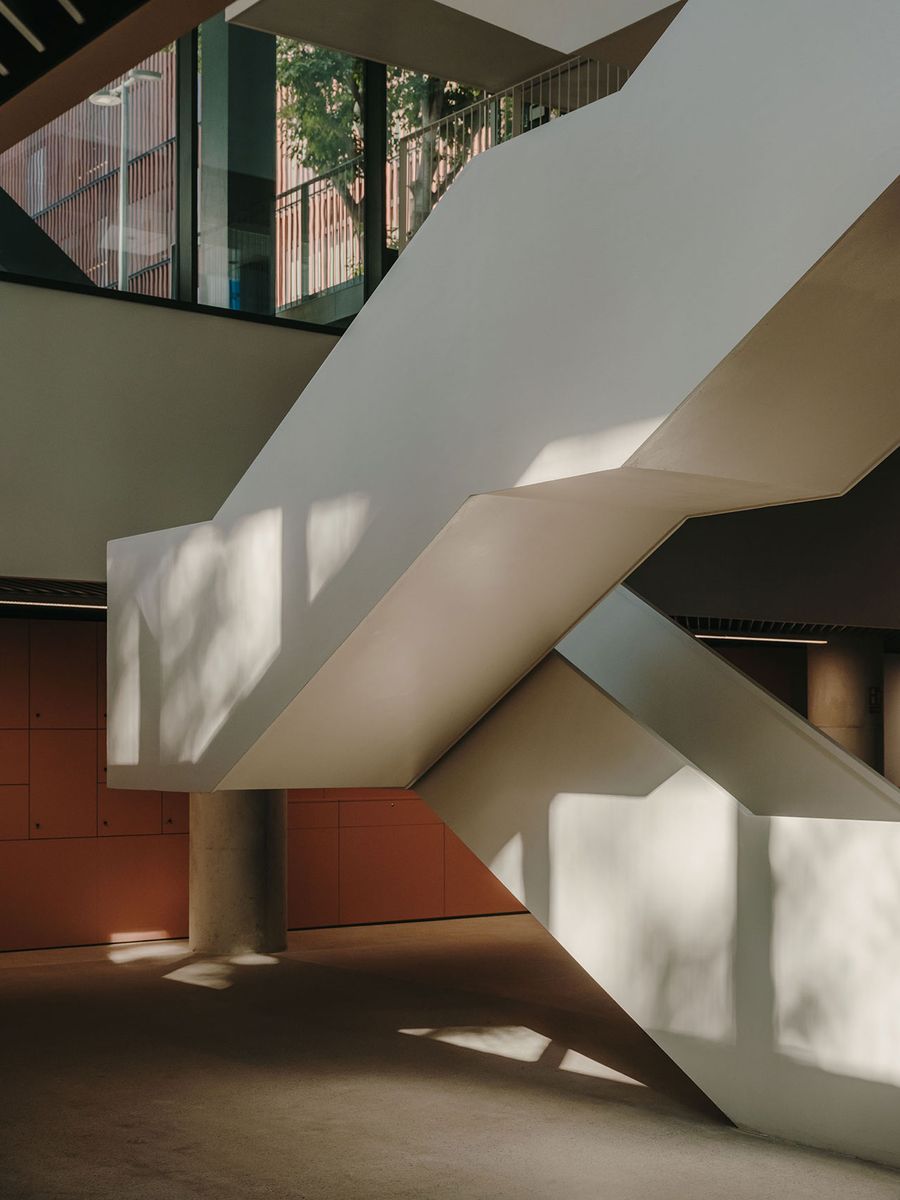
Photography by Salva Lopez.
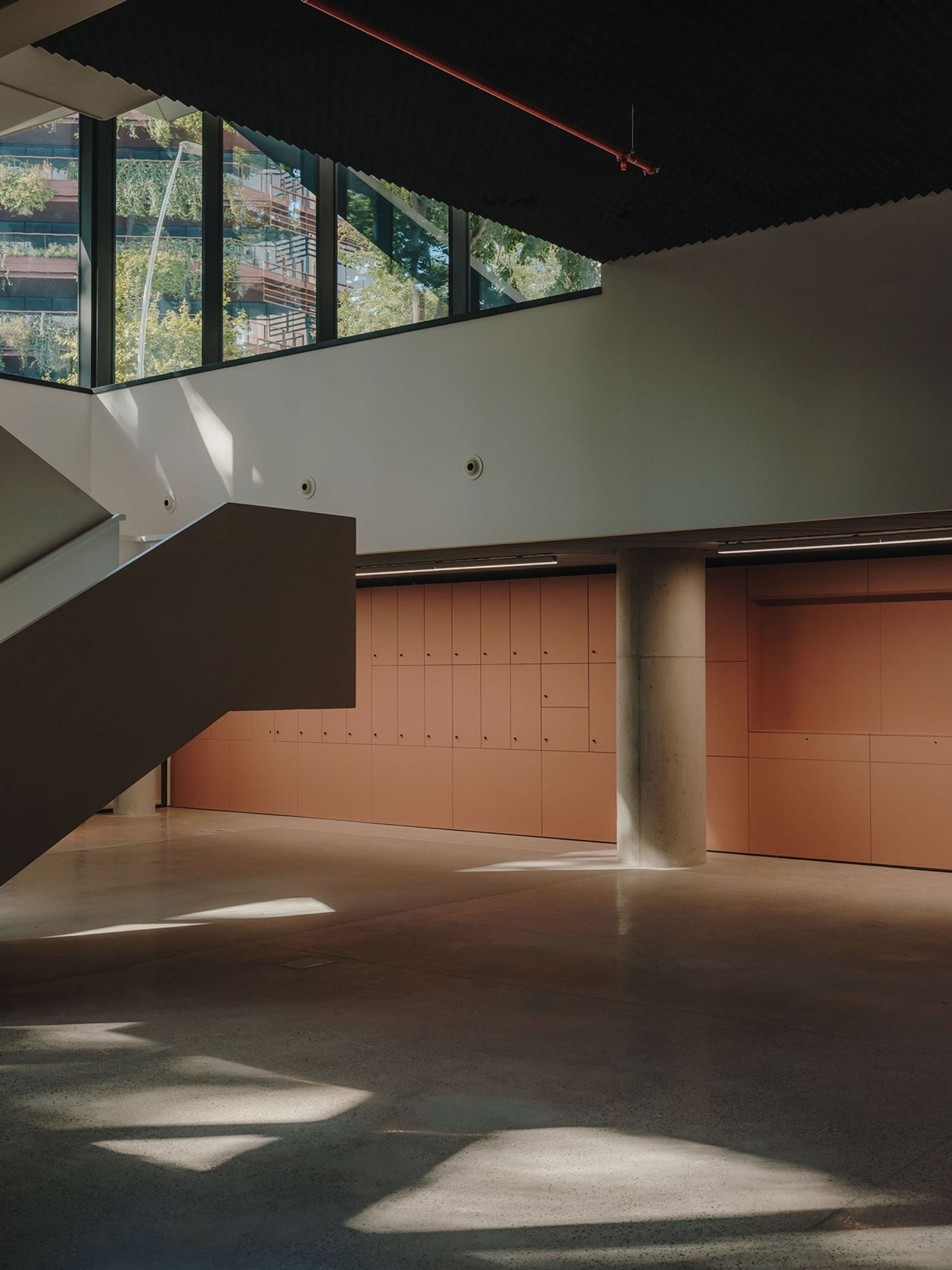
Photography by Salva Lopez.
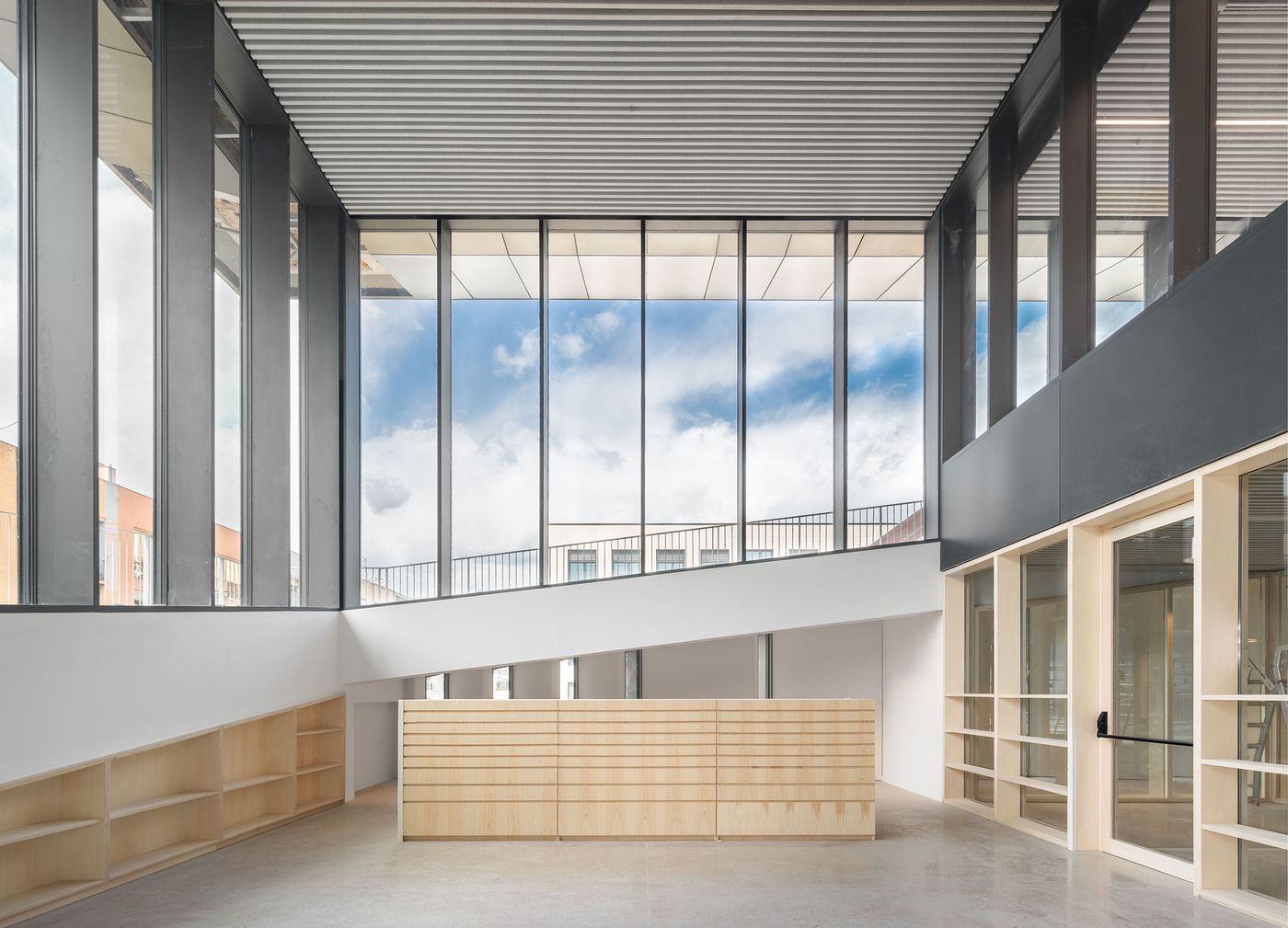
Photography by Pedro Noguera.
When it comes to the building's circulation, this has been cleverly organized around its perimeter, turning passageways into multifunctional areas that act as social zones, workspaces, and exhibition spaces, an approach that redefines the conventional use of hallways, transforming them into vibrant spaces for interaction, sharing ideas, and showcasing work. From the third to the fifth floors, the building’s circulation extends externally, with pathways that overlook the surrounding cityscape as well as views of the sea. Between the third and the fifth floors, an elevated "raised plaza" on the fourth floor serves as the focal point of the building, in the form of an outdoor space that is sheltered from direct sunlight, where students can gather, study, or take a break, enjoying the Mediterranean breeze.
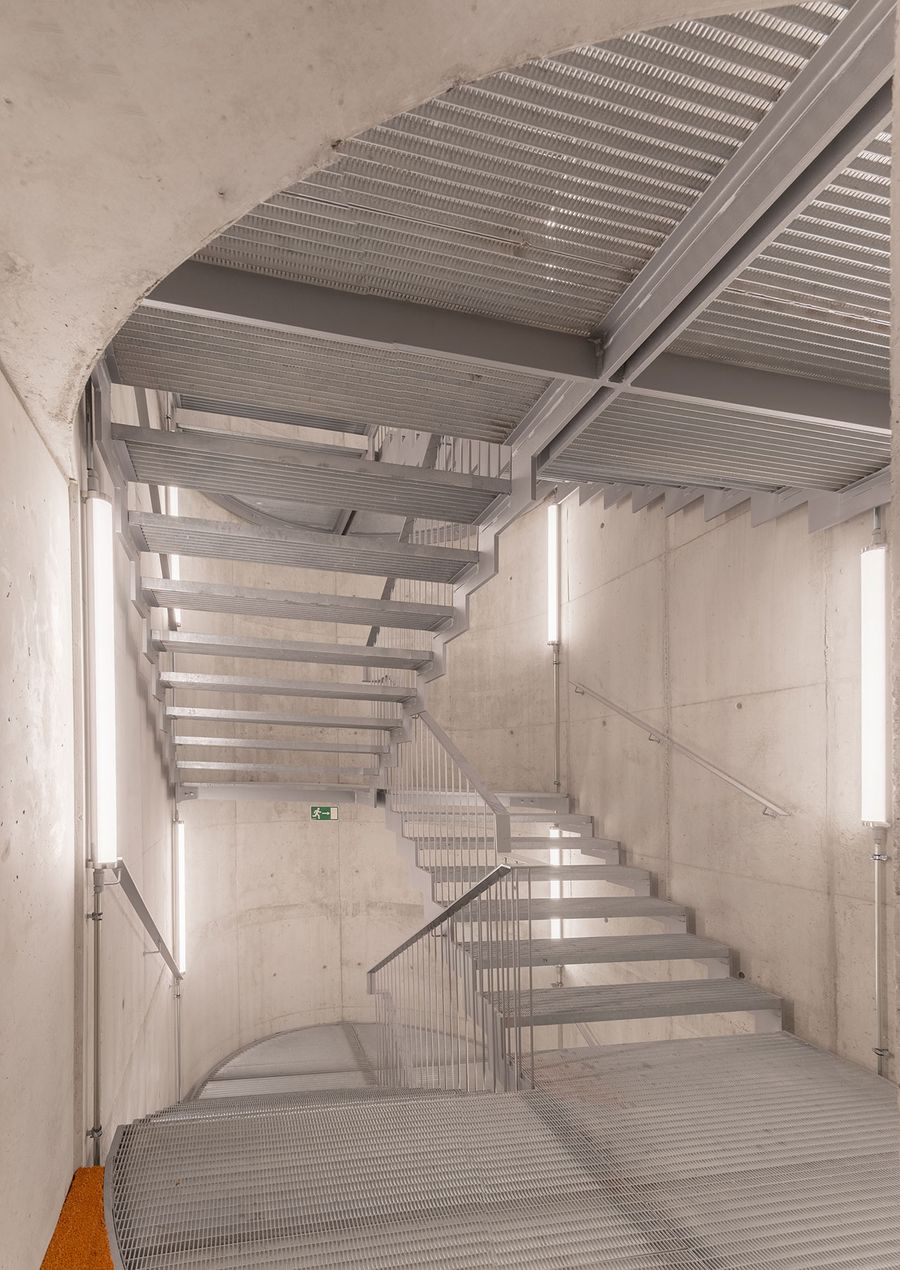
Photography by Pedro Noguera.
Throughout, sustainable design elements have earned the campus BREEAM certification, highlighting its energy-efficient architecture and alignment with global standards in environmental responsibility, in a nod to LCI Education's Canadian roots. However you look at it, LCI Barcelona's new campus stands as a bold vision of modern education, where architecture, learning, and urban life seamlessly converge to create a dynamic ecosystem that adapts to the needs of its diverse student community, ultimately setting a new standard for creative learning environments.

Photography by Pedro Noguera.

Photography by Pedro Noguera.
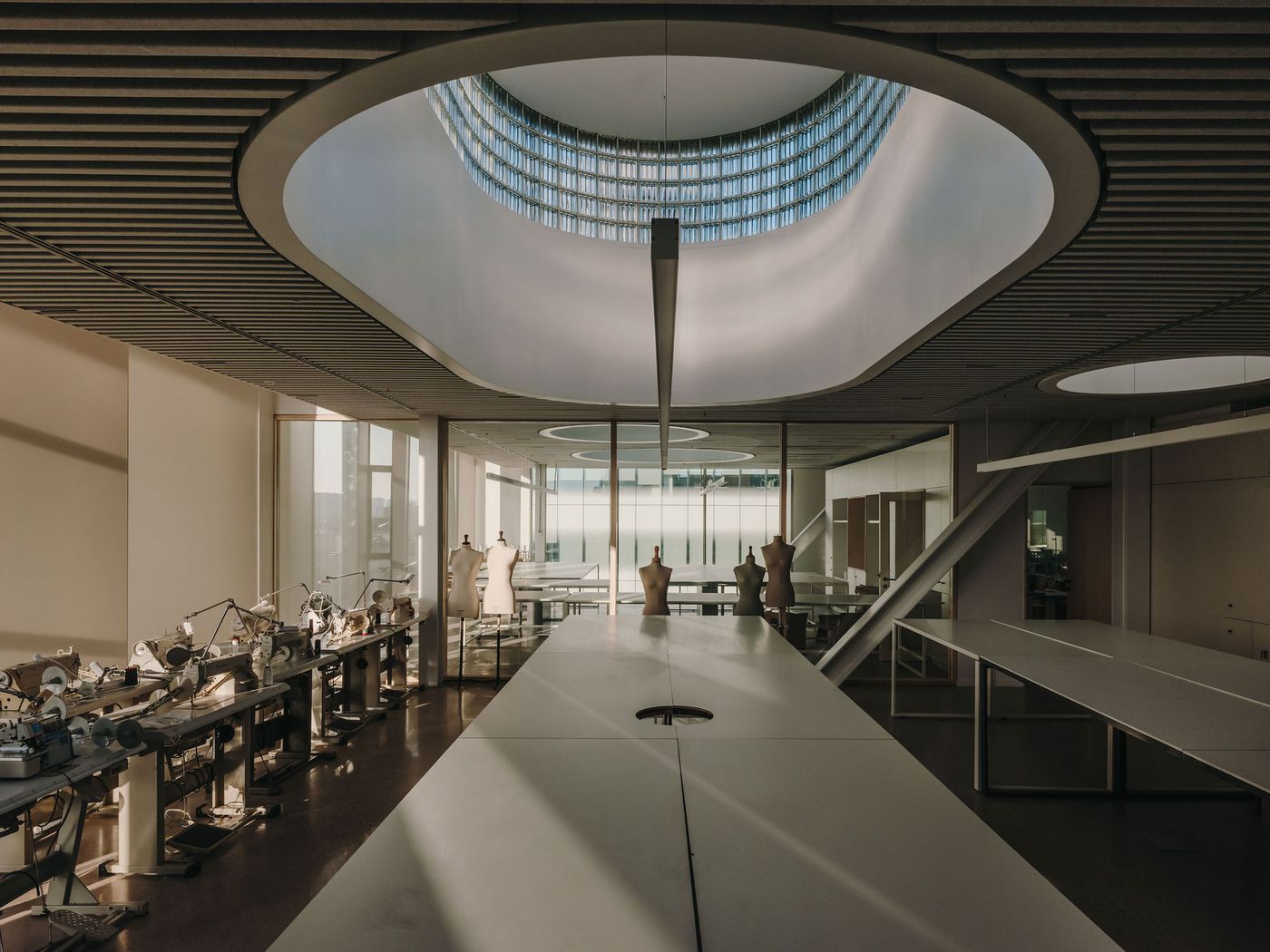
Photography by Salva Lopez.
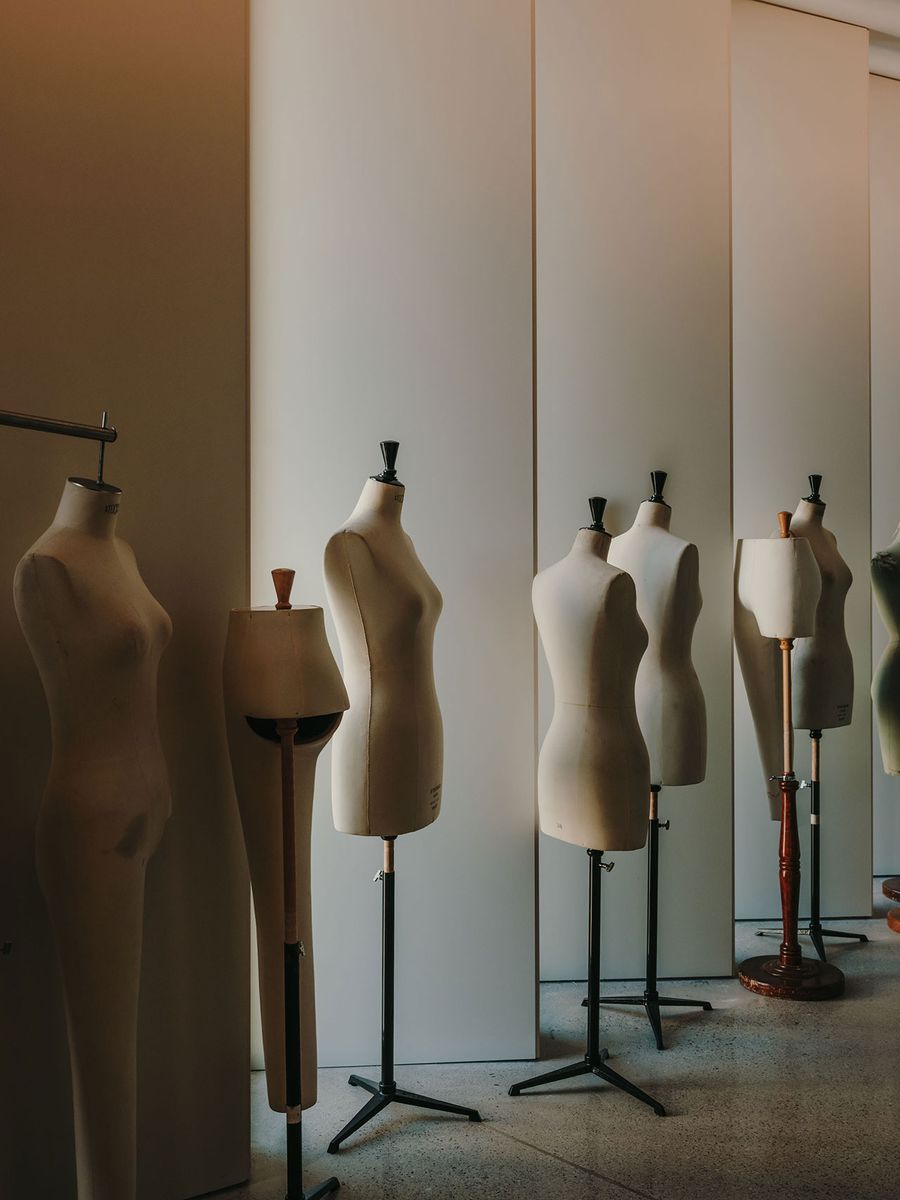
Photography by Salva Lopez.
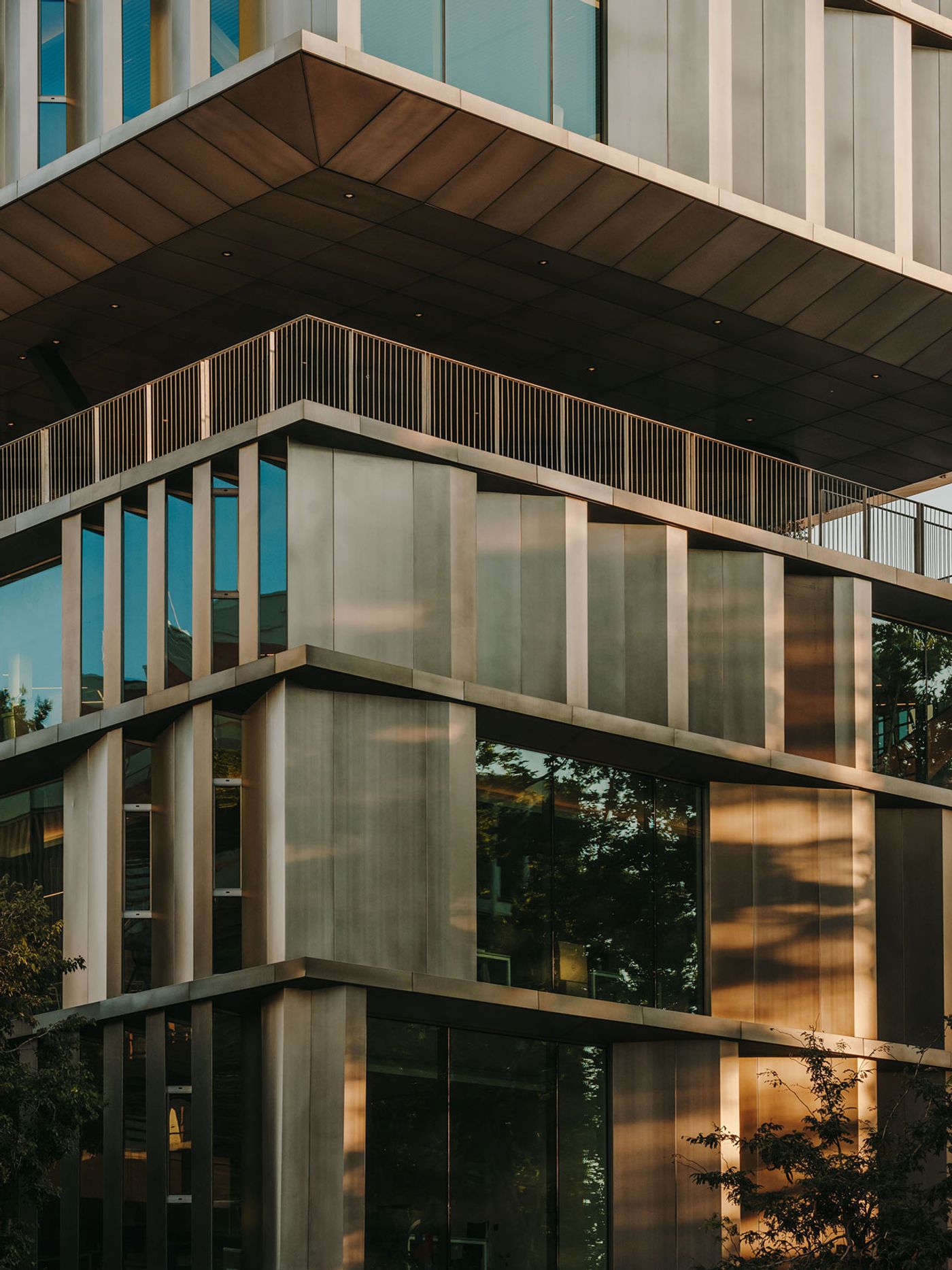
Photography by Salva Lopez.
